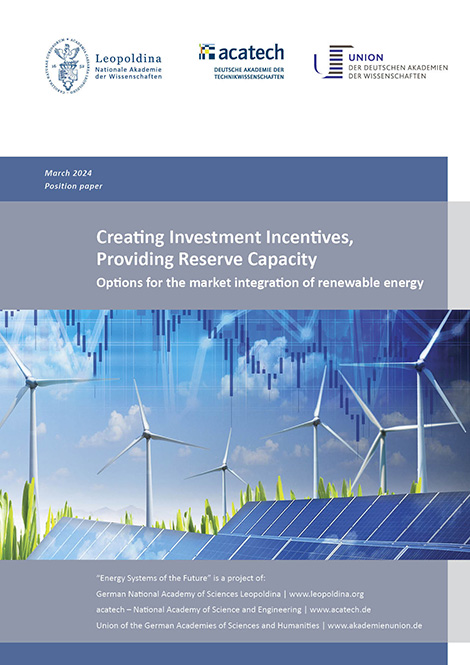Creating Investment Incentives, Providing Reserve Capacity: options for the market integration of renewable energy
The expansion of renewable energy is key to meeting Germany’s climate targets. However, the variable, weather-dependent nature of wind and solar power gives rise to two investment problems. Firstly, prices fall when too much electricity is fed into the grid at the same time. This creates financial risks for the operators of renewable energy installations. And secondly, reserve capacity must be maintained for the times when not enough electricity is generated.
Experts from the Academies’ Project “Energy Systems of the Future” (ESYS) investigated how targeted reforms to the electricity market design can help to solve these investment problems and integrate renewables into the market.
The main questions addressed included the following:
- What are the impacts of the growing proportion of renewable energy on the electricity market?
- How can the electricity market help to provide effective and efficient support for renewable energy?
- Will renewable energy be able to prevail in the market without financial support in the future?
- How can security of supply be guaranteed in the electricity system even at times when there are supply shortages, and is there a need for additional incentives to invest in reserve capacity?
- To what extent can increasing flexibility in the electricity system help?
The Position Paper concludes that while there is no fundamental question about the functioning of the electricity market, reforms are needed so that it can still perform as effectively as possible in a system with a high proportion of renewable energy. The ESYS experts propose various reforms and discuss their respective pros and cons. The mechanisms examined include fixed and sliding market premium models, Contracts for Difference and central and decentralised capacity markets.
acatech/Leopoldina/Akademienunion (Eds.): “Creating Investment Incentives, Providing Reserve Capacity. Options for the market integration of renewable energy” (Position Paper), Series on Science-based Policy Advice, 2024. ISBN: 978-3-8047-4426-4.






